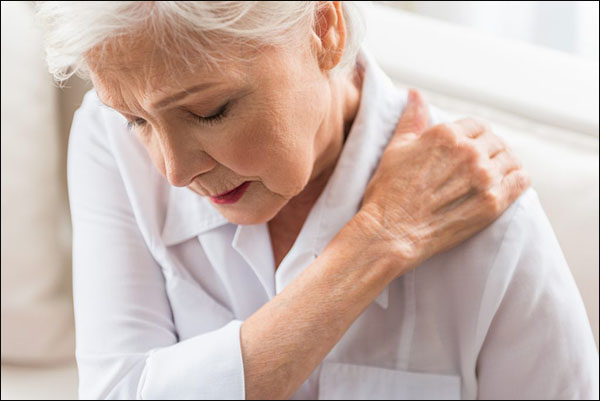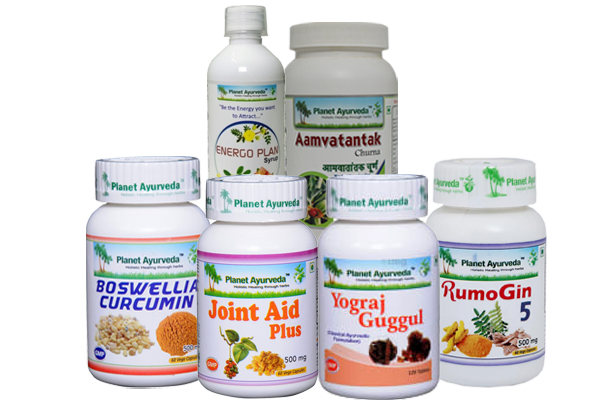Polymyalgia Rheumatica – Work Interrupter | An overview
Abstract
Getting up early in the morning and wanting a fresh start but there it is…pain in the body. Pain in joints and muscles is a common problem many people face in their lifetime. It may be due to some hectic work you might have done in recent times or maybe due to some pathological conditions like osteoporosis, arthritis, rheumatoid arthritis, and one uncommonly heard disorder polymyalgia rheumatica.

What is Polymyalgia Rheumatica?
Polymyalgia rheumatica is a condition that causes discomfort in muscles of varied areas of the body, mostly the shoulder and hip region. It is an inflammatory disorder and is often mistaken for arthritis. Mostly, it occurs in people of the age group above 50 years and sometimes it occurs as a sub included disease along with temporal arteritis. The individual even experiences immobility in certain parts of the body. This condition is also referred to as PMR.
According to Ayurveda, this condition is caused due to unevenness in the Vata dosha and is included in Vata vyadhi. This condition is caused due to consumption of dry food, excessive exercise, fear, etc are the causes of aggravation of Vata dosha. This leads to pain in the muscles of the body.
Let’s Know The Causes of Polymyalgia Rheumatica
This disease does not have particular causes but can occur in people who have this condition in the family history. Certain gene variations can also lead to this condition.
People who are more susceptible to this condition are:
- It occurs mostly in people who are in the age group of 50 and above.
- As compared to men, women are at more risk of getting this condition.
- People in foreign countries that are European countries have more chances of getting afflicted with this ailment.
Let’s Know The Signs to Identify this Condition
There are a lot of symptoms that occur on both sides of the body and might include symptoms like an ache in the upper limbs, neck region, and shoulder region. Pain in pelvic regions and muscles of the thigh. Due to this pain, the movement of the body gets restricted, and may even experience stiffness in various parts of the body. Some other symptoms may include loss of weight, fatigue, the feeling of no well-being, Depression, low-grade fever, etc.
Ayurvedic Remedies By Planet Ayurveda
Planet Ayurveda readies supplements, restraining in mind the prominence of every system and essence of the body that is the doshas and dushyas of the body and treats the patients based on their Prakriti. Every human has a distinct Prakriti based on vata, pitta, and Kapha dosha predominance. Their supplements are 100 percent pure and organic. The supplements of Planet Ayurveda are prepared under the oversight of competent physicians. They are prepared from the pure extracts of herbal plants and don’t cause any side effects. For Treatment of Polymyalgia Rheumatica, Planet Ayurveda brings supplements that are:
- Rumogin 5 Capsule
- Boswellia Curcumin
- Yogarj Guggul
- Aamvatantak Churna
- Joint Aid Plus
- Energo Plan Syrup
So let’s have a look!!!!
1. Rumogin 5 Capsule
This supplement is in the form of capsules and is polyherbal. Haridra (Curcuma longa), Sonth (Zingiber officials), Shallaki (Boswellia serrata), Marich (Piper nigrum), and Pippali (Piper longum). Drugs used in these supplements are good at curtailing swelling and reducing pain without causing unconsciousness. This reduces pain in the body and makes it flexible.
Dosage: After meals, take one capsule twice a day with warm water.
2. Boswellia Curcumin
This supplement is in the form of capsules and has two herbs as fundamental components and they are Shallaki (Boswellia serrata) and Haridra (Curcuma longa). These herbs have been traditionally wielded for ages, particularly curcumin which has antioxidant properties that enrich neurological activities and are satisfactory in providing support to the immune system. Boswellia curtails inflammation, pain, and stiffness in the parts of the body due to this property it is widely used.
Dosage: After meals, take one capsule twice a day with warm water.
3. Yogarj Guggul
This supplement is in the form of tablets and is poly herbal. It contains Guggulu (Commiphora mukul), Musta (Cyperus rotundus), Chitraka (Plumbago zeylanica), Amalaki (Emblica officials), etc as ingredients. This supplement improves immunity and procures strength for the body. It reduces anguish and rigidity caused due to this condition and brings relaxation to the muscles in the body.
Dosage: After meals, two tablets twice a day with warm water.
4. Aamvatantak Churna
It is in the form of Churna and is poly herbal. Some of the key ingredients of this churna are Ashwagandha (Withania somnifera), Methi (Trigonella foenum graecum), and Suranjaan (Colchicum autumnale). These drugs have properties that decrease Vata that eventually reduce pain. It even makes the digestive health of the body better.
Dosage: After meals, one teaspoon twice a day with warm water.
5. Joint Aid Plus
This supplement is in the form of capsules and is poly herbal. The ingredients are Nirgundi (Vitex negundo), Shallaki (Boswellia serrata), Guggul (Commiphora mukul), Sonth (Zingiber officinale), and Ashwagandha (Withania somnifera). It diminishes discomfort in the joint region and immobility caused due to this condition. It curtails the inflammatory response in the body.
Dosage: After meals, take one capsule twice a day with warm water.
6. Energo Plan Syrup
This supplement is in the form of syrup and is poly herbal. Some of the ingredients are Jeevanti (Leptadenia articulate), Amalaki (Emblica officials), Shatavari (Asparagus racemosus), Ashwagandha (Withania somnifera), and Gokshura (Tribulus terrestris). This syrup strengthens the body and relieves it from the pain caused due to this condition.
Dosage: After meals, one teaspoon twice a day with warm water.
Conclusion
Ayurveda is a salubrious approach that helps in treating a patient by giving utmost significance to each individual’s Prakriti and state of the disease. So let’s take a step forward to a healthy life with the supplements of Ayurveda. In case of any query kindly visit www.PlanetAyurveda.com. For more queries, you can send your queries to our email id herbalremedies123@yahoo.com



